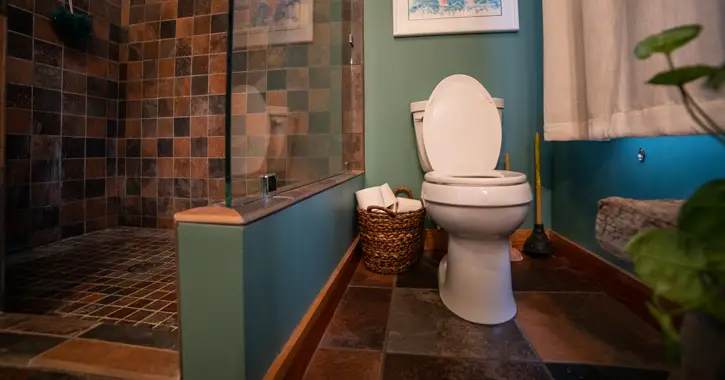Can A Toilet Be Moved? (Find Out How Now!)

Sometimes you may want to change your bathroom, maybe to remodel it or update it. Perhaps, the changes you wish to make involve moving your toilet. However, you’re not really sure if you can move a toilet.
The short answer is yes, but it will require significant plumbing work. The waste and supply lines will both have to be relocated. In many cases, the available distance you can move your toilet will be limited by the necessary vertical drop the drainpipe must-have.
To move a toilet, you must alter the drainage line, and to move your toilet more than a few inches, you will need to change the water supply line. If you are determined to move it, first figure out how far.
Moving your toilet only a few inches may allow you to avoid having to alter the plumbing significantly. This simply will install a few more pieces that cost less than $30.
Moving your toilet more than a few inches will necessitate altering the drainage system and water supply in your bathroom. This will vary significantly in difficulty depending on the type of bathroom and the floor beneath it. However, it is likely to be difficult for the average homeowner.
Moving a toilet is a challenge that can be very different depending on how far you wish to move it. Therefore, we will address it separately moving it based on whether it is a few inches or more.
Moving a toilet a few inches can be accomplished by the average homeowner but will take a bit of effort. Depending on your floor, you may need different tools to clear space for an offset flange, so check what your floor and subfloor are to prepare appropriately.
Before you start moving your toilet far find out where your drainage stack is and make sure you can keep the necessary vertical drop. Also, significant changes to the bathroom may require a permit and building inspection, so check with your local city hall before starting your project.
Exact procedures for this project will differ significantly, but for general steps, read below.
Hiring a plumber for this job can be a good idea, especially if you are not experienced with plumbing. The average cost to have a plumber move your toilet plumbing is about $850.
This is pretty costly, but it could cost significantly more if you accidentally damage plumbing or suffer a major leak. This could not only necessitate repairing your plumbing but also repairing damage to your household.
Doing the work on your own is relatively inexpensive for a few inches, likely less than $30. The cost increases as the distance increases, but plan on spending at least $150 to $200.
If you don’t vent your toilet, the pressure will not equalize in the pipe when the toilet drains. This could cause water from other attached drains to be pulled up into the toilet. Therefore, it is essential to vent your toilet.
Your house will have a main venting stack that vents out through the roof. All the plumbing in your home connects to this vent. So, you will need to make sure your toilet connects to it.
No, a toilet drain should not drop straight down. For the drain to work effectively, it needs to drop somewhere from one-fourth to one-eighth of an inch per foot.
Any less of a drop could cause the toilet not to drain correctly. Whereas, a steeper drop could lead to clogs due to waste building up in the pipe.